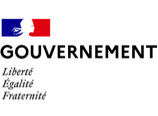Find the right financing for your project
G_NIUS simplifies your search for financing with tools and services tailored to each stage of your project.

Practical guide
Answers to frequently asked questions about sources of healthcare funding
Don't confuse project budget with grant amount
Often, when you respond to a call for projects, the amount requested is not the amount awarded! even if you win!
- In fact, the funding you will be awarded often represents 50 to 60% of the amount requested (mentioned in the rules of the call for projects). The remainder must be provided by the company to complete the project.
Make your calculations!
- Financiers are generally attentive to your company's equity capital.
- The general rule is: equity capital required to qualify for innovation aid = book equity capital + partners' current accounts - debts - aid already received
- If you are involved in capitalized production, this may or may not be counted as equity capital. Ask your financer about this!
- Remember: capitalized production corresponds to the sum of work carried out on your own account (e.g. software development....)
- You can also include in your business plan support for innovation such as innovation tax credit, research tax credit, French tech grant to finance prototype design or pilot implementation, or design and feasibility studies. Please note that tax credits are generally deferred
Funding digital health innovation projects
To complete, or accelerate, the development of innovative projects in digital healthfinancial assistance can be a major asset. In France and Europe, there are numerous grants for enterprises exist and it is sometimes difficult to identify each device from finance tailored to its project, including in the field of digital health.
In the environment from digital health in France, there are various ways to obtain financing or help for the development of innovative digital projects. These means may be accessible to companies by responding to a appel to projects or by participating in competitions for example. These help are also data by intervention funds in region (set in place by the ARS), investment banks (such as the bpifrance), the ministry des Solidarités et de la Health (via the package innovation, the hospital program of research clinical) ...
So many possibilities that require a research in-depth from project owners, in order to identify those that might be suitable for their situations.
Each company must develop its strategy from financing according to the nature, maturity and needs of its project. It's a work continued to lead throughout the project : from the idea, through the creation from prototype, to launch. To do this, it's important to clearly define the project's objective and guiding principles. You need to know how to highlight the innovative of your project and the services rendered by yourdevice. Finally each company must demonstrate the feasibility of its project, sa foundation must be solid, particularly with regard to the treatment and confidentiality of data.
How can G_NIUS help me understand the financing of digital projects in Healthcare?
The national innovation du digital en health (G_NIUS), has for one of its objectives to bring a accompagnement in the development descompanies to make it easier to identify the various sources of financing available.
Appeals to project, experiments, funds innovation... G_NIUS gives you the keys to understanding how these sources of financing publics.
The companies can find on G_NIUS the Fact sheets to identify the different types financing French and European public.
You'll also find advice to help you determine your financing, to help you understand how the devices medical, to successfully create your funding application and finally to build a reliable business model.
The device map on G_NIUS also allows you to locate on the various territories and regions from Francefrom help financials for your innovation projects in ehealth.





